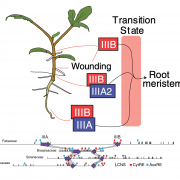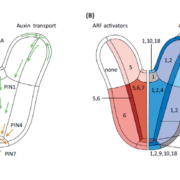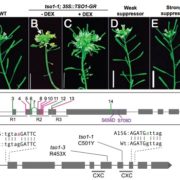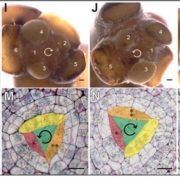Discarding unwanted organs is a highly regulated process in plants (Cell)
 Plants frequently, seasonally, discard unwanted organs (termed abscission), which include dead leaves, flowers and ripe fruit. Abscission requires tight control to avoid exposure to biotic and abiotic factors, which can lead to tissue damage or infection. Due to the presence of the cell wall, plant cells are tightly linked together, and cell migration is not possible, which is in contrast to the wound healing mechanisms in animals. The cell wall, therefore, needs to undergo specific chemical changes and modifications to enable safe abscission. Recently, Lee et al (2018) demonstrated that two neighbouring cell layers in the Arabidopsis thaliana flower abscission zone have distinct and coordinated activities that allow for precise abscission of plant organs. The cell layer that remains attached to the plant (residuum cells or RECs) undergoes transdifferentiation to become epidermal cells, the only known time when non-epidermal cells become epidermis de novo after embryogenesis, while the cell layer that separates from the plant body (secession cells or SECs) develops a honeycomb structure of lignin that allows for cell wall hydrolysing enzymes to be localised and restricted only to the region being separated. These findings significantly enhance our understanding of the abscission process in plants, and the authors believe their work will contribute to improved crop and fruit production strategies. (Summary by Danielle Roodt Prinsloo) Cell 10.1016/j.cell.2018.03.060
Plants frequently, seasonally, discard unwanted organs (termed abscission), which include dead leaves, flowers and ripe fruit. Abscission requires tight control to avoid exposure to biotic and abiotic factors, which can lead to tissue damage or infection. Due to the presence of the cell wall, plant cells are tightly linked together, and cell migration is not possible, which is in contrast to the wound healing mechanisms in animals. The cell wall, therefore, needs to undergo specific chemical changes and modifications to enable safe abscission. Recently, Lee et al (2018) demonstrated that two neighbouring cell layers in the Arabidopsis thaliana flower abscission zone have distinct and coordinated activities that allow for precise abscission of plant organs. The cell layer that remains attached to the plant (residuum cells or RECs) undergoes transdifferentiation to become epidermal cells, the only known time when non-epidermal cells become epidermis de novo after embryogenesis, while the cell layer that separates from the plant body (secession cells or SECs) develops a honeycomb structure of lignin that allows for cell wall hydrolysing enzymes to be localised and restricted only to the region being separated. These findings significantly enhance our understanding of the abscission process in plants, and the authors believe their work will contribute to improved crop and fruit production strategies. (Summary by Danielle Roodt Prinsloo) Cell 10.1016/j.cell.2018.03.060









